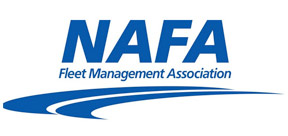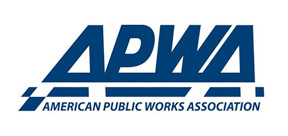Downtown redevelopment, sustainability and infrastructure priorities for White Plains mayor

Revitalizing downtown, including providing more housing downtown, has been a priority for several mayors across the country, including White Plains, N.Y., Mayor Thomas Roach.
Roach has been mayor of his city in Westchester County for nearly 14 years. He said White Plains is only 10 square miles and has a population of about 60,000, which more than doubles to about 150,000-200,000 during the day.
When asked about the financial state of the city, he replied, “We’re in really good shape. We’ve been double A1 stable and our reserves are all high.”
Like most municipalities, Mayor Roach said White Plains is continuously working on infrastructure, “including the ones people don’t see” like relining sanitary and storm water sewers and paving.
“Our engineers are outscoring streets so it’s not politicized,” he said.
The city has really been focused on making the city more pedestrian and bike-friendly. It received a $400,000 Safe Streets for All grant from the federal government to study the traffic in the city with the goal of reducing fatal and serious injury accidents for pedestrians and cyclists.
“It’s a Vision Zero program, and right now, we’re working on the public comments and engineers are combing that data, which will form the base to implement the grant application and be able to commence building infrastructure for a good Vision Zero program,” he explained.

The concept started in Sweden. He shared that in the United States, officials tended to think they should train people to be better drivers, but Sweden’s concept was that not everyone is going to follow the rules so design infrastructure to lessen the impact of poor decisions on drivers or cyclists.
“We’re a thriving city with a lot of new residential development downtown so having better bike and pedestrian infrastructure will make it better for everyone,” Roach said.
Besides that, White Plains was awarded an almost $10 million grant from the state of New York for downtown revitalization. Roach said it was a detailed and complex grant application process involving the city, nonprofits, and businesses downtown. Additionally, the state only awards one grant per region. In the past, the state used to award smaller amounts to more cities but changed it to a larger amount per region to have more of an impact. Roach said he had to appoint a committee, and they were told to come up with about $14 million in requests and $9.7 million would be funded.
Roach said getting that grant was probably the biggest accomplishment this year. One project that will be done includes the creation of a bike lane on Hamilton Avenue from Broadway to the train station, which will be “signalized and protected from traffic — similar to what they have in Montreal.” The cost is about $3 million.
White Plains is a “high-cost environment and a lot of people ride bikes to work,” so Roach wants to provide safe transportation and improved air quality.
Officials also want to improve the area around the train station. According to Roach, that area has always been safe “but sterile.” More apartments have been developed there, so he wants to create a space that is aesthetically pleasing for people to gather.
“It sends a signal about the city — when people see 400 people doing yoga there or a farmer’s market — it plants a seed and changes the image of downtown, making it playful and exciting,” he said.
He envisions adding a cool art installation, and better lighting — something he can’t justify coming out of the general fund but could with this grant money.

There’s also an area called the Grove Street extension — land acquired for off-ramps during the urban renewal phase but never used. Grove Street is now Martin Luther King Jr. Street. When Roach was in that area recently, he noticed “all these people walking through this extension — they naturally started to use it as a pedestrian walkway,” so he wants to use some of the grant money to formalize it by adding lights and benches, maybe a dog park and playground.
“Make it a nice, safe area because people have ‘told’ us where they want to walk,” he said.
Submissions from private organizations and businesses included a much-needed update and enlargement of the ladies’ restrooms at the Performing Arts Center and HVAC work. The city owns the building, and the PAC leases it. Its presence in downtown has shown a direct impact. He said Morton’s The Steakhouse will open early if there’s a matinee at the PAC because people will go to the restaurant afterward.
Some businesses want to do facade work, and one building, which was once a Sears and then a Walmart, could not find a tenant.
“It would have been knocked down, but parking for three downtown office buildings is on top of the building,” he said.
So the owner wants to fix it up and find an active-use tenant like a Dave and Buster’s Restaurant and Arcade or a pickleball business — something that could use the high ceilings.
White Plains has converted more buildings into apartments this year, too. A former office building opened as apartments for leasing while a former business school with dorms is being turned into 100% affordable condominiums.
“We haven’t had a condo project in the county in a long time, and this will be 100% affordable,” he said.
The downtown revitalization started a while ago with the addition of a small mall and performing arts center where a vacant Macy’s once was. Roach said stores first moved out to the malls and now malls are losing to the internet. He recalled attending a seminar shortly after becoming mayor where a speaker said, “You don’t bring back downtowns with an aquarium or a convention center — you bring them back with people living downtown because they will go downstairs and eat at the restaurants and shop in the stores.”
“That’s what we’ve focused on, and it’s worked incredibly well,” he said.
“Now downtown is mostly restaurants and services, and business is booming — it’s fully leased up — customers live right there. The main part of our revitalization has been people living downtown, and it’s worked very well.”
He pointed out White Plains has two train stations, and one is downtown. People living downtown can walk to the train station and get to Manhattan’s Grand Central Station in about 38 minutes. Young people who work in Manhattan can live in White Plains, which is 26 miles north of Manhattan. The city also has empty nesters moving out of their four-bedroom houses on a half-acre and moving downtown. Roach said, “It extends their independence because they can walk to everything.”
Many things help downtown, but the core is apartment buildings.

Sustainability
Roach said, “We’re also very focused on sustainability — we have a huge solar installation that was a public-private partnership and is generating $1 million a year for us.”
The mayor wants to bring in another 100 Level 2 vehicle chargers for those living in downtown apartments. Some of the older apartments don’t have parking garages, so the tenants are using the city’s garages, where Roach would like to add the chargers. He’d also like to get more Level 3 chargers through the New York Power Authority since they are quicker for travelers.
“We were ahead of our neighbors with our electric vehicle infrastructure,” he said, adding that he drives electric vehicles.
When Level 3 chargers were limited, if someone coming to town needed to charge with a Level 2 charger, they’d be spending a couple of hours in town. This meant time spent in the local theater, restaurants, or shops. However, even with the Level 3 chargers, it takes about 20 minutes, so when Roach was driving home from upstate and stopped in a town to charge, he would visit a bagel shop to get a bagel and coffee.
“So it does help the economy to have them,” he said.
White Plains has done a lot with parks. It took a former railway and opened it as a greenway linear park. In fact, any place that’s not being used is being turned into a park. He mentioned one forgotten area that was beautiful; it had a stream and a wooded area and already had a road, so the city turned that into a park. Meanwhile, in a former parking lot, White Plains completed a native plant installation.
“It’s called re-wilding,” he said. “It’s a big meadow, and we planted a lot of native flowers, herbs, blueberry bushes — it’s loaded with birds and butterflies, and the people love it!”
In the works
Roach said White Plains is in the process of building a new parking garage on East Post Road for the hospital, which has 4,500 employees. It just finished acquiring the property through eminent domain and building the garage for the hospital will free up the city’s other garages for residents, other workers, and visitors to use.
Another big project is the redevelopment of the former Galleria Mall. It will be knocked down and will be replaced with a mix of housing and retail. Forty-five percent of the land will be open to the public. The mall was a mega-block, and this is an opportunity to open that space up and have it be “another gathering point and place to build community.”
But he said it’s a long process. Demolition is slated for next year, and it will all be done in phases. So getting that process started is one extensive project for 2025, and Roach said there are several more apartment buildings coming on the market.
“I want to finish the Streets for All program — get the grant and implement their recommendations,” he said.
And he’s always getting asked about the Galleria Mall. “It’ll be amazing when it’s finished. It’ll be a revenue generator, and that will help keep the taxes reasonable for our residents while keeping the services high,” he said.
Next Article: Community improvements: Watsonville increased sales tax funds projects that will benefit everyone

